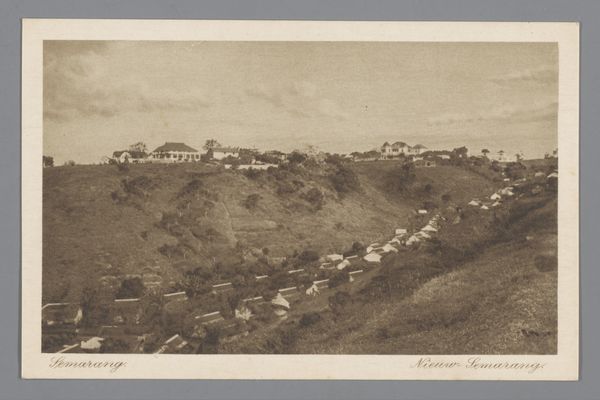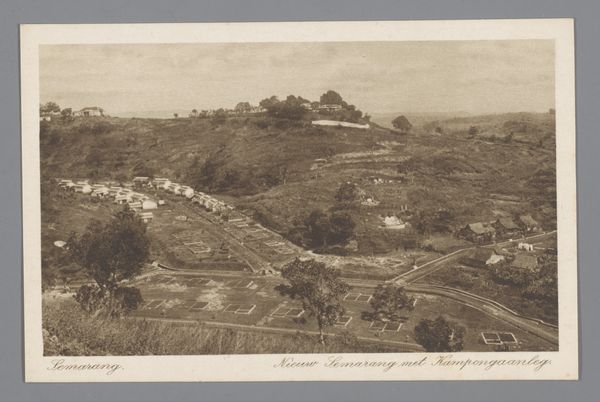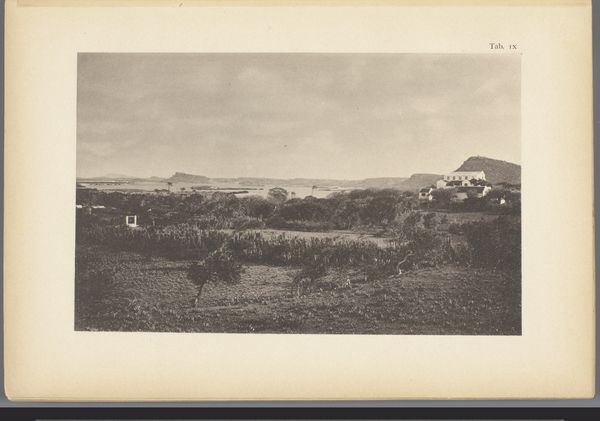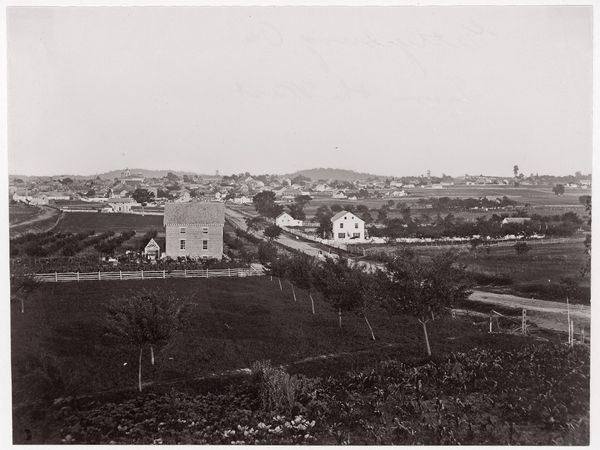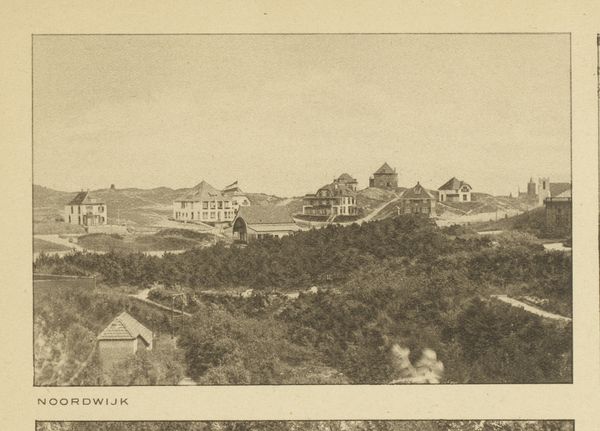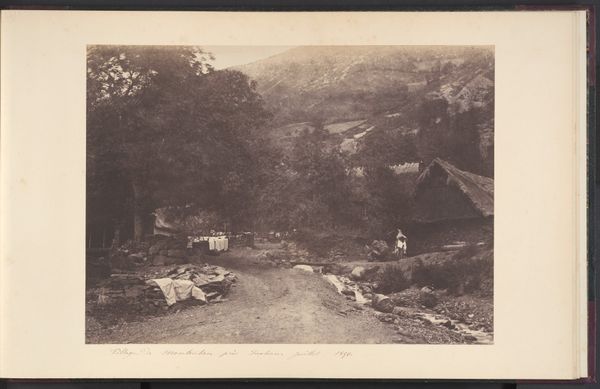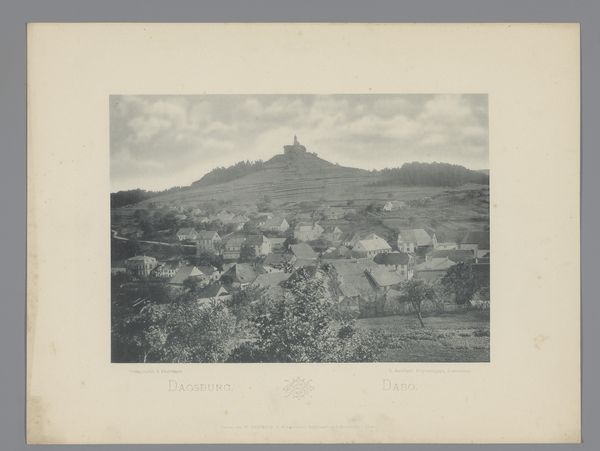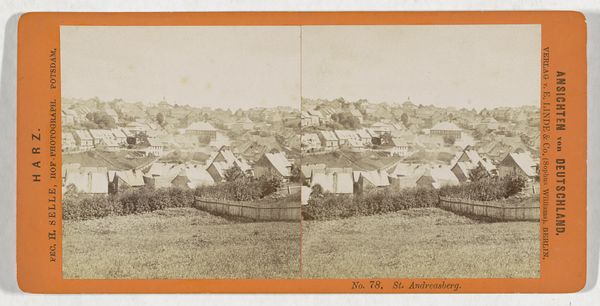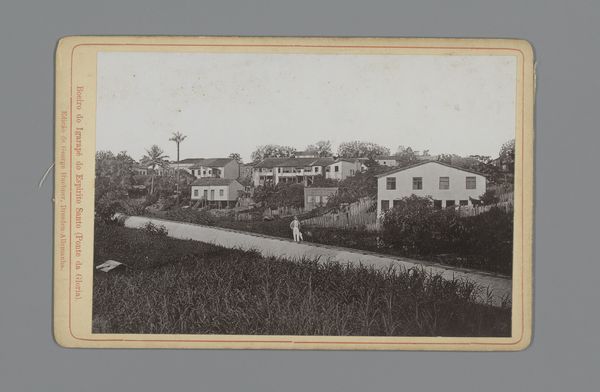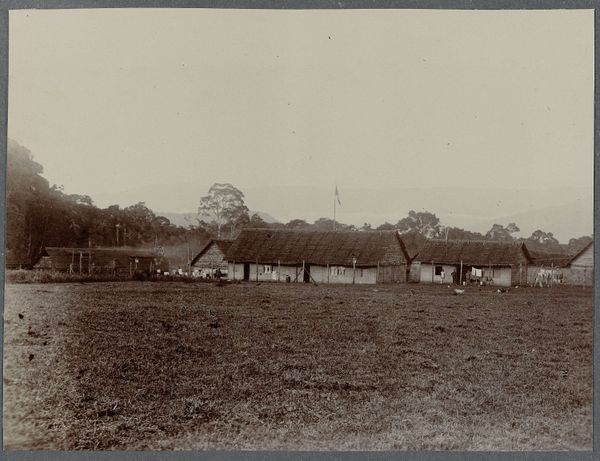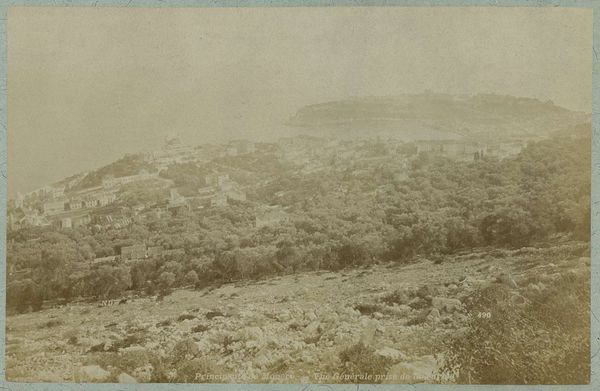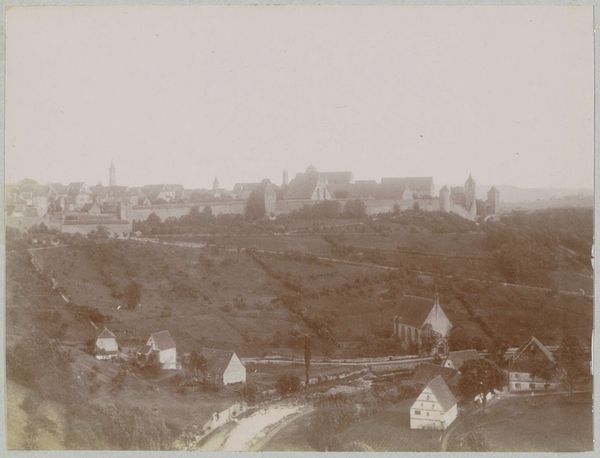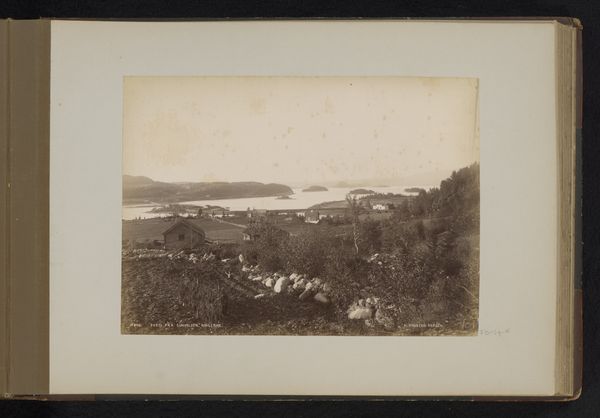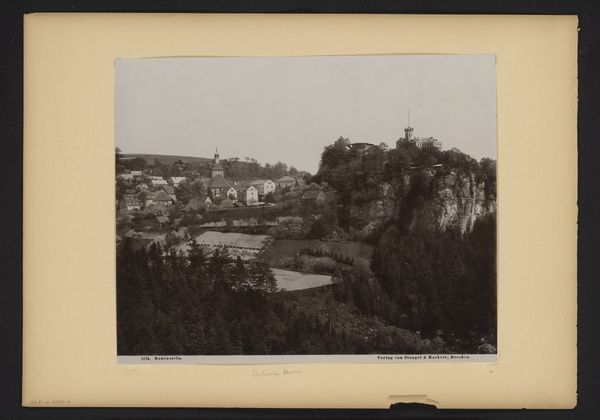
photography
#
landscape
#
photography
#
orientalism
#
cityscape
Dimensions: height 9 cm, width 14 cm
Copyright: Rijks Museum: Open Domain
Curator: Otto Hisgen created this intriguing photographic print, "Semarang. Nieuwe Tjandiweg," around 1900. The scene shows a settlement on a verdant hillside, evoking a very particular time and place. Editor: My immediate response is the stark contrast of the built and natural environments, though rendered in very muted sepia tones. There’s something peaceful yet unsettling about it. A serene view that can be read as an idealized colonial vision or a stark documentation of a changed landscape. Curator: Exactly. This work belongs to the tradition of Orientalism, a genre rife with problematic representations. Here we see the depiction of Semarang, Indonesia, through a colonial lens. The very composition – the way the settlement is positioned in relation to the dominating hillside and imposing structure on top– implies a certain power dynamic. Editor: The symbols present also create multiple interpretive pathways. Look at the architecture, especially the small, crowned structure atop the hill. Its positioning is deliberate; the crown as a universally understood symbol of authority or power seems strategically imposed on the rest of the landscape and the local habitations. What would have the place of the indigenous peoples been, seeing this view everyday? Curator: And beyond the imposing structure, notice the "new" road, Nieuwe Tjandiweg in Dutch; its imposition disrupts the landscape, literally and figuratively carving through it. These elements serve as physical and metaphorical reminders of colonial power and control. Consider the infrastructure's effects and its representation within a historical narrative framework to fully understand Hisgen's work. Editor: It’s also a powerful reminder that what we perceive as documentation is often a crafted narrative. Hisgen, in his landscape imagery, uses the symbolism of place, and location as stand ins for larger discussions of control and occupation. A fascinating glimpse into how photography played a role in shaping perceptions of Southeast Asia. Curator: Precisely. By examining the artistic intention and understanding the prevailing attitudes of the time, we can approach this image with the critical eye it deserves, revealing a complex interplay of visual aesthetics, power structures, and cultural exchange. Editor: Indeed, viewing Hisgen's photo provides both beauty and critical discussion for further conversations of post-colonial discourse and theory.
Comments
No comments
Be the first to comment and join the conversation on the ultimate creative platform.
